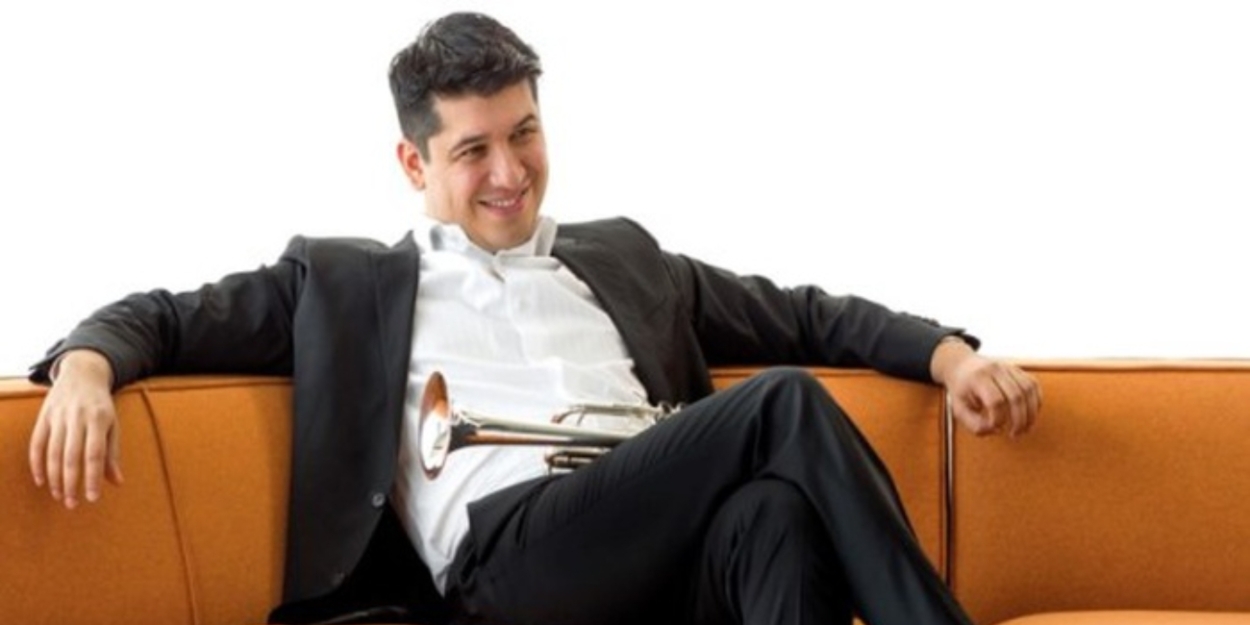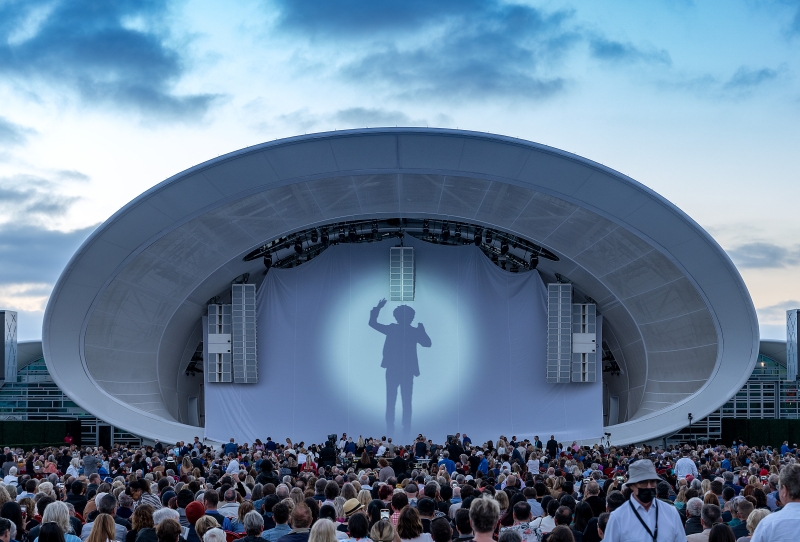Review: The San Diego Symphony Opens Summer Season at San Diego's Rady Shell
An Exciting Dance-Based Program Includes a New Latin Trumpet Concerto

Pacho Flores is a winner of the top prize in the world’s most prestigious trumpet competition, the Maurice André International, and the list of contemporary composers writing for him is impressive and growing. The San Diego Symphony has now performed two of the results. Last season it was Paquito D'Rivera's Concerto Venezolano for Trumpet and Orchestra. This year Flores returned for Roberto Sierra’s Salseando for trumpet and orchestra as part of a program with dance as a unifying theme. I’ll be disappointed if we don’t hear Marquez’s recent “Autumn” trumpet concerto on a future San Diego program.
It seems likely we will. Flores and San Diego conductor Rafael Payare are both graduates of Venezuela’s El Sistema program and were together in a brass quintet for 16 years. Payare played the French horn before he began his full-time conducting career.
Sierra’s concerto is in the usual three movements, fast, slow, fast, but far from conventional. In keeping with the concert’s dance theme, each movement emphasizes different aspects of salsa, the style influenced by son, mamba and cha cha among other Latin dances. The composer has said, “I’ve also provided the opportunity for the soloist to improvise, in the manner that salsa musicians would.”
Flores used a different type of trumpet for each movement. I suspect, not always the same three in every concert. He has the permanent upper-lip depression of fanatically dedicated trumpeters who actually enjoy practicing. His tone was unusually full on each instrument, and his technique and intonation flawless. The flashy virtuosity of the first movement called for one of the standard trumpets used by both classical and jazz musicians, his rich sound reminding me of Harry James from the Big Band era. He went to the much deeper warmer sound (large-belled coronet?) for the tenderly romantic second movement. In the finale it was the smallest of the three instruments, most likely a pocket trumpet whose tighter wound tubing produces a slightly more brilliant sound than the standard trumpet. (It’s also easier to pack, perhaps a major consideration for Flores whom I’ve seen carry four different trumpets to the stage.)
During the third movement, the sellout crowd wasn’t at its best when Flores sought audience participation with a solo detour into popular Latin tunes. They were clearly familiar to his smiling fellow Venezuelan, Maestro Payare, but not to most of the rest of us at the Shell who struggled to duplicate the few Spanish words Flores sought in a call-response mode. All in good fun.
What’s not to like, brilliant playing in classical music with a distinct flavor of Latin moods and rhythms.
(Note: While Shell ambient noise is generally absent to minimal, a rock concert from a universe far far away was dimly audible during the first half’s quieter moments.)
Leonard Bernstein’s Symphonic Dances from West Side Story preceded the concerto. Though failing the Venezuelan popular-music test, few in the audience would have missed

the melody of “Somewhere” in the beautiful tones of Concertmaster Jeff Thayer’s Stradivarius, and then again in the full orchestra’s tear-inducing final movement. “Maria” as a cha cha was less obvious.
Payare’s interpretation opened with a bang, the Sharks gang dead set on a rumble. The composer, conducting on an old recording, was more cocky-swagger. Bernstein’s melodies and orchestrations work either way with percussion and brass as skilled as San Diego’s, though I’d give the edge to the composer. The wind section was a delight in the score’s lighter moments, the strings full and lush in the moving finale.
As they were in Rachmaninov’s Symphonic Dance Suite, a superb, more traditionally classical-genre finale. The last score of Rachmaninov’s career, it includes several quotations from earlier works.
There are three “dances,” to stretch the term a bit compared to the cha chas of Sierra and Bernstein. None are intended as suitable for ballets or ballrooms. The propulsive first movement includes a march Sousa could not have written. The vaguely gothic second is a sometimes lilting waltz, more Ravel than Strauss. The final movement, prophetically since the composer died less than three years later, introduces the sinister Dies Irae (Day of Wrath) theme to represent approaching Death. But the strain of doom mixes with brass and percussion driven optimism that crushes Death in an accelerated tempo to a final triumph. The word “Halleluiah” in the score is a clear indication of Rachmaninov’s winner.
Payare conducted these three works with perhaps even more than his usual combination of aerobic enthusiasm and passion, his orchestra following every twist and turn in an evening

of marvelous musical variety and a gentle breeze off the bay.
For the full San Diego Symphony season calendar visit the website.
Photos San Diego Symphony
Reader Reviews
Videos

